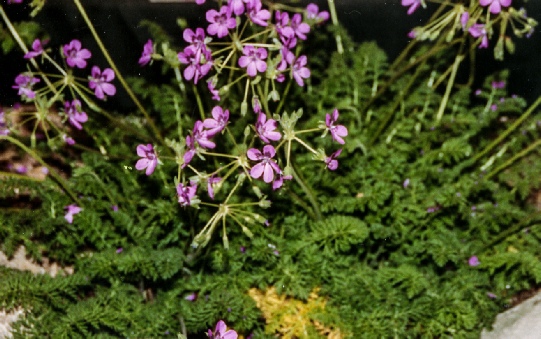Erodium
and California
This site was created and is maintained by Benjamin Coultrup.
Clade I, Subclade 1
Subgenus Erodium
Clade I, Subclade 2
Subgenus Barbata
Clade II, Subclade 3
Clade II, Subclade 4
-
-
Erodium carvifolium and castellanum
Erodium carvifolium Boiss. & Reut. was first named and described by Boissier and Reuter in 1842.
Erodium castellanum (Pau) Guitt. was originally described as Erodium romanum var. castellanum Pau in 1906.
Erodium castellanum (Pau) Guitt. was named as a full species in Contribution a l’etude biosystematique du genre Erodium L’Her (1972). Professor Guy-
Interestingly, E. castellanum will cross with E. manescavi both ways to give fertile plants, E. carvifolium sens strict. will not.
These 2 species have recently been merged as one species, Erodium carvifolium, in Flora Iberica, but are kept as separate species here, for the reasons given above.
Erodium carvifolium sens strict. Boiss. Et Reuter
Clade II; Subclade 4; Section Cicutaria, Subsection Acaulia
Stemless perennial with leaves up to 150mm, pinnate, not flat but 3 dimensional.
Leaves: Leaflets rather hard, ultimate segments linear; stipules brown.
Inflorescence: Umbels of 3-
Fruit: Mericarp eglandular; no noticeable furrows beneath the circular foveole, which has a ciliate external border; beak 30-

Distribution: endemic to West & central Spain -
Publication details: Boiss. & Reut. In: Diagn. Pl. Nov. Hisp. 9. (1842).
Distribution: In stony soils, in pastures (800) 1000-
1. NW of the Tiberico System -
2. Central System -
3. Montes de Leon and Aledanos, C of the Cantabrian Range -
Erodium carvifolium; Marie Addymans Collection at Hampton Court Show -

This website has now been archived:
You will soon be redirected to the new website at
erodium.uk